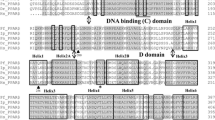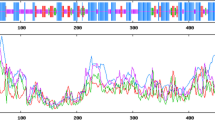Abstract
Peroxisome proliferator-activated receptors (PPARs) are involved in the regulation of lipid and carbohydrate metabolism and can be activated either by natural ligands as fatty acids or by synthetic ligands including several environmental chemicals. In this study, two PPARα isoforms (α1 and α2) were analyzed in turbot (Scophthalmus maximus) for a different tissue distribution. PPARα1 was ubiquitously expressed, while the PPARα2 was predominantly expressed in the heart. Following this result, turbot juveniles were exposed by injection to a synthetic selective PPARα agonist, WY-14643, for 14 days. Suppression subtractive hybridization (SSH) was performed with pools of heart samples of control and exposed fish to get insights into PPARα-regulated genes in the heart of juvenile turbot. Four genes were positively identified in the forward-subtracted and 12 genes in the reverse-subtracted cDNA SSH library, corresponding to the down-regulated and up-regulated genes in response to the WY-14643 treatment, respectively. The confirmation of these results in individual samples of juvenile turbot exposed to WY-14643 revealed a statistically significant mRNA induction of two cardiac muscle proteins (myosin light chain 2 and tropomyosin 4), which were shown to be involved in heart contraction and heartbeat regulation in other teleost species. Herewith, we showed for the first time that PPARα2 is predominantly expressed in the heart and that a PPARα agonist can induce the mRNA expression of cardiac muscle proteins in teleosts.




Similar content being viewed by others
References
Batista-Pinto C, Rodrigues P, Rocha E, Lobo-da-Cunha A (2005) Identification and organ expression of peroxisome proliferator activated receptors in brown trout (Salmo trutta f. fario). Biochim Biophys Acta 1731:88–94
Berger J, Moller DE (2002) The mechanisms of action of PPARs. Annu Rev Med 53:409–435
Bertrand S, Thisse B, Tavares R, Sachs L, Chaumot A, Bardet PL, Escriva H, Duffraisse M, Marchand O, Safi R, Thisse C, Laudet V (2007) Unexpected novel relational links uncovered by extensive developmental profiling of nuclear receptor expression. PLoS Genet 3:e188
Bility MT, Thompson JT, McKee RH, David RM, Butala JH, Vanden Heuvel JP, Peters JM (2004) Activation of mouse and human peroxisome proliferator-activated receptors (PPARs) by phthalate monoesters. Toxicol Sci 82:170–182
Chen Z, Huang W, Dahme T, Rottbauer W, Ackerman MJ, Xu X (2008) Depletion of zebrafish essential and regulatory myosin light chains reduces cardiac function through distinct mechanisms. Cardiovasc Res 79:97–108
Colliar L, Sturm A, Leaver MJ (2011) Tributyltin is a potent inhibitor of piscine peroxisome proliferator-activated receptor alpha and beta. Comp Biochem Physiol C 153:168–173
Corton JC, Anderson SP, Stauber A (2000) Central role of peroxisome proliferator-activated receptors in the actions of peroxisome proliferators. Annu Rev Pharmacol Toxicol 40:491–518
Diatchenko L, Lau YF, Campbell AP, Chenchik A, Moqadam F, Huang B, Lukyanov S, Lukyanov K, Gurskaya N, Sverdlov ED, Siebert PD (1996) Suppression subtractive hybridization: a method for generating differentially regulated or tissue-specific cDNA probes and libraries. Proc Natl Acad Sci USA 93:6025–6030
Diatchenko L, Chenchik A, Siebert P (1998) Suppression subtractive hybridization: A method for generating subtracted cDNA libraries starting from poly (A+) or total RNA. In: Siebert P, Larrick J (eds) RT-PCR methods for gene cloning and analysis. BioTechniques Books, MA, pp 213–239
Djouadi F, Brandt JM, Weinheimer CJ, Leone TC, Gonzalez FJ, Kelly DP (1999) The role of the peroxisome proliferator-activated receptor alpha (PPAR alpha) in the control of cardiac lipid metabolism. Prostaglandins Leukot Essent Fatty Acids 60:339–343
Doud SK, Pan LX, Carleton S, Marmorstein S, Siddiqui MA (1995) Adaptational response in transcription factors during development of myocardial hypertrophy. J Mol Cell Cardiol 27:2359–2372
Escher P, Braissant O, Basu-Modak S, Michalik L, Wahli W, Desvergne B (2001) Rat PPARs: quantitative analysis in adult rat tissues and regulation in fasting and refeeding. Endocrinology 142:4195–4202
Gonzalez FJ (2002) The peroxisome proliferator-activated receptor alpha (PPARalpha): role in hepatocarcinogenesis. Mol Cell Endocrinol 193:71–79
Gordon AM, Regnier M, Homsher E (2001) Skeletal and cardiac muscle contractile activation: tropomyosin “rocks and rolls”. News Physiol Sci 16:49–55
Gruen F, Blumberg B (2009) Endocrine disrupters as obesogens. Mol Cell Endocrinol 304:19–29
Hamano T, Kobayashi K, Sakairi T, Hayashi M, Mutai M (2001) Peroxisome proliferator-activated receptor alpha (PPAR alpha) agonist, WY-14,643, increased transcription of myosin light chain-2 in cardiomyocytes. J Toxicol Sci 26:275–284
Henderson SA, Spencer M, Sen A, Kumar C, Siddiqui MA, Chien KR (1989) Structure, organization, and expression of the rat cardiac myosin light chain-2 gene. Identification of a 250-base pair fragment which confers cardiac-specific expression. J Biol Chem 264:18142–18148
Henikoff S, Henikoff JG, Alford WJ, Pietrokovski S (1995) Automated construction and graphical presentation of protein blocks from unaligned sequences. Gene 163:17–26
Hernandez OM, Jones M, Guzman G, Szczesna-Cordary D (2007) Myosin essential light chain in health and disease. Am J Physiol Heart Circ Physiol 292:H1643–H1654
Hihi AK, Michalik L, Wahli W (2002) PPARs: transcriptional effectors of fatty acids and their derivatives. Cell Mol Life Sci 59:790–798
Huang Q, Fang C, Wu X, Fan J, Dong S (2011) Perfluorooctane sulfonate impairs the cardiac development of a marine medaka (Oryzias melastigma). Aquat Toxicol 105:71–77
Infante C, Matsuoka MP, Asensio E, Canavate JP, Reith M, Manchado M (2008) Selection of housekeeping genes for gene expression studies in larvae from flatfish using real-time PCR. BMC Mol Biol 9:28
Kondo H, Misaki R, Gelman L, Watabe S (2007) Ligand-dependent transcriptional activities of four torafugu pufferfish Takifugu rubripes peroxisome proliferator-activated receptors. Gen Comp Endocrinol 154:120–127
Leaver MJ, Boukouvala E, Antonopoulou E, Diez A, Favre-Krey L, Ezaz MT, Bautista JM, Tocher DR, Krey G (2005) Three peroxisome proliferator-activated receptor isotypes from each of two species of marine fish. Endocrinology 146:3150–3162
Maglich JM, Caravella JA, Lambert MH, Willson TM, Moore JT, Ramamurthy L (2003) The first completed genome sequence from a teleost fish (Fugu rubripes) adds significant diversity to the nuclear receptor superfamily. Nucleic Acids Res 31:4051–4058
Morano I (1999) Tuning the human heart molecular motors by myosin light chains. J Mol Med 77:544–555
Ogino Y, Katoh H, Kuraku S, Yamada G (2009) Evolutionary history and functional characterization of androgen receptor genes in jawed vertebrates. Endocrinology 150:5415–5427
Pfaffl MW (2001) A new mathematical model for relative quantification in real-time RT-PCR. Nucleic Acids Res 29:e45
Raingeard D, Cancio I, Cajaraville MP (2009) Cloning and expression pattern of peroxisome proliferator-activated receptors, estrogen receptor alpha and retinoid X receptor alpha in the thicklip grey mullet Chelon labrosus. Comp Biochem Physiol C 149:26–35
Robinson-Rechavi M, Marchand O, Escriva H, Bardet PL, Zelus D, Hughes S, Laudet V (2001) Euteleost fish genomes are characterized by expansion of gene families. Genome Res 11:781–788
Rosal R, Rodea-Palomares I, Boltes K, Fernandez-Pinas F, Leganes F, Gonzalo S, Petre A (2010) Ecotoxicity assessment of lipid regulators in water and biologically treated wastewater using three aquatic organisms. Environ Sci Pollut Res Int 17:135–144
Rose TM, Schultz ER, Henikoff JG, Pietrokovski S, McCallum CM, Henikoff S (1998) Consensus-degenerate hybrid oligonucleotide primers for amplification of distantly-related sequences. Nucleic Acids Res 26:1628–1635
Rottbauer W, Wessels G, Dahme T, Just S, Trano N, Hassel D, Burns CG, Katus HA, Fishman MC (2006) Cardiac myosin light chain-2: a novel essential component of thick-myofilament assembly and contractility of the heart. Circ Res 99:323–331
Shimada E, Kinoshita M, Murata K (2009) Expression of cardiac myosin light chain 2 during embryonic heart development in medaka fish, Oryzias latipes, and phylogenetic relationship with other myosin light chains. Dev Growth Differ 51:1–16
Tamura K, Peterson D, Peterson N, Stecher G, Nei M, Kumar S (2011) MEGA5: molecular evolutionary genetics analysis using maximum likelihood, evolutionary distance, and maximum persimony methods. Mol Biol Evol 28:2731–2739
Toramoto T, Ikeda D, Ochiai Y, Minoshima S, Shimizu N, Watabe S (2004) Multiple gene organization of pufferfish Fugu rubripes tropomyosin isoforms and tissue distribution of their transcripts. Gene 331:41–51
Tseng YC, Chen RD, Lucassen M, Schmidt MM, Dringen R, Abele D, Hwang PP (2011) Exploring uncoupling proteins and antioxidant mechanisms under acute cold exposure in brains of fish. PLoS One 6:e18180
Urbatzka R, Lorenz C, Lutz I, Kloas W (2010) Expression profiles of LHbeta, FSHbeta and their gonadal receptor mRNAs during sexual differentiation of Xenopus laevis tadpoles. Gen Comp Endocrinol 168:239–244
Wagner KD, Wagner N (2010) Peroxisome proliferator-activated receptor beta/delta (PPARbeta/delta) acts as regulator of metabolism linked to multiple cellular functions. Pharmacol Ther 125:423–435
Wall CE, Cozza S, Riquelme CA, McCombie WR, Heimiller JK, Marr TG, Leinwand LA (2011) Whole transcriptome analysis of fasting and fed Burmese python heart: insights into extreme physiological cardiac adaptation. Physiol Genomics 43:69–76
Zhao L, Zhao X, Tian T, Lu Q, Skrbo-Larssen N, Wu D, Kuang Z, Zheng X, Han Y, Yang S, Zhang C, Meng A (2008) Heart-specific isoform of tropomyosin4 is essential for heartbeat in zebrafish embryos. Cardiovasc Res 80:200–208
Acknowledgments
This work was financially supported via the project PTDC/MAR/68885/2006, funded by the Portuguese Foundation for Science and Technology (FCT) and by the “Programa Operacional Ciência e Inovação 2010” (POCI 2010), co-financed by the FEDER European Community fund. We would like to thank Professor António Afonso for having kindly provided the experimental fish.
Conflict of interest
The authors declare that they do not have any conflict of interest.
Author information
Authors and Affiliations
Corresponding author
Rights and permissions
About this article
Cite this article
Urbatzka, R., Galante-Oliveira, S., Rocha, E. et al. Tissue expression of PPAR-alpha isoforms in Scophthalmus maximus and transcriptional response of target genes in the heart after exposure to WY-14643. Fish Physiol Biochem 39, 1043–1055 (2013). https://doi.org/10.1007/s10695-012-9761-7
Received:
Accepted:
Published:
Issue Date:
DOI: https://doi.org/10.1007/s10695-012-9761-7




